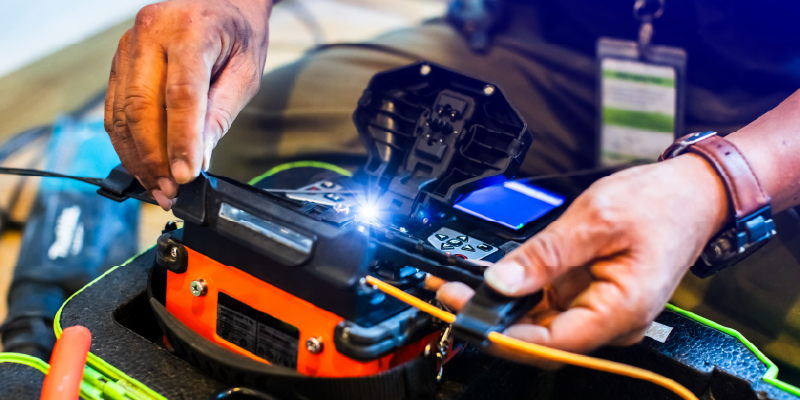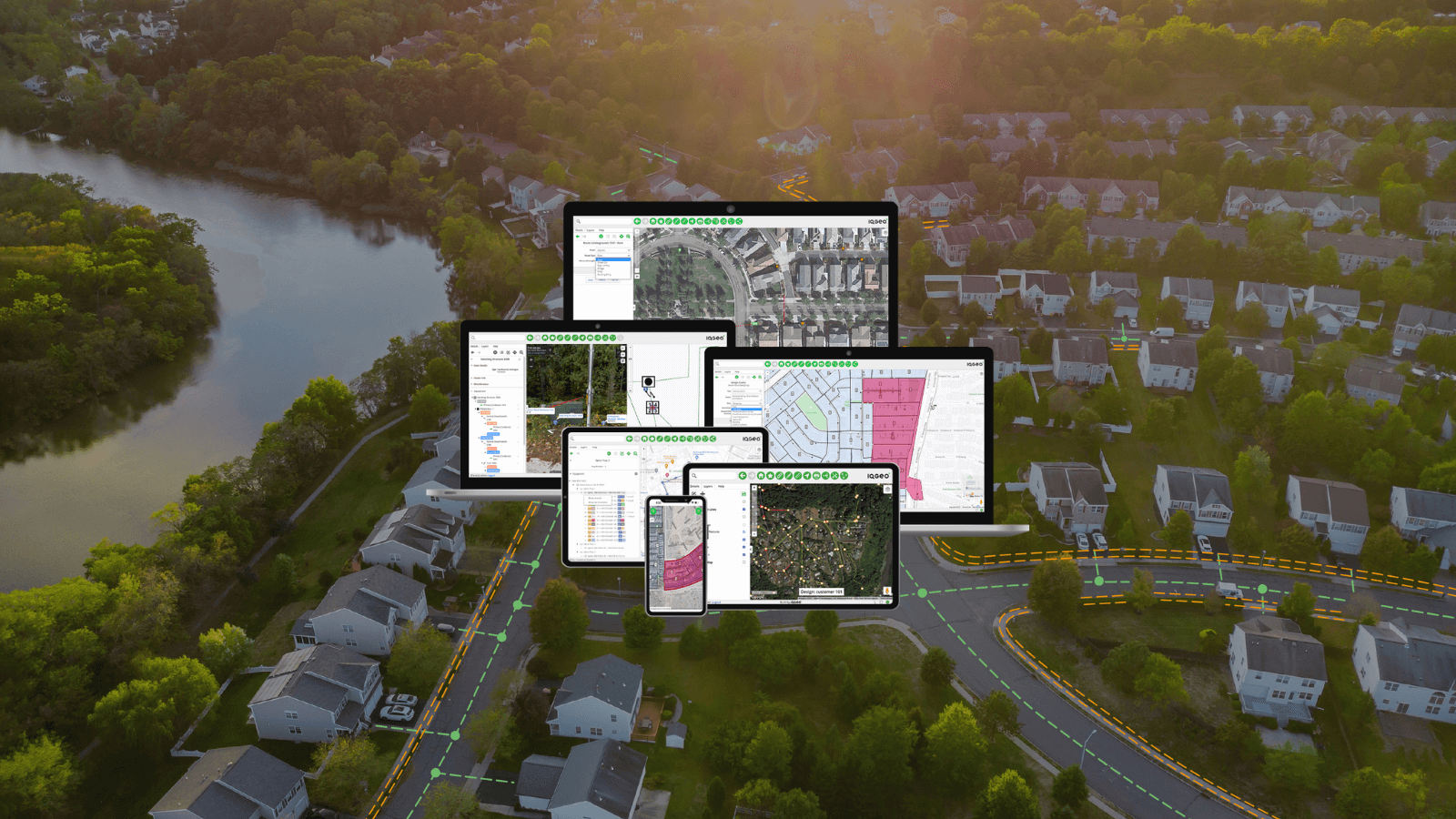IQGeo’s webinar, hosted in partnership with the FTTH Council Europe explored how Deutsche Glasfaser - one of Germany’s fastest growing and most innovative broadband operators - has been able to bring fiber to the home (FTTH) to rural communities by using industry leading technology and best practice to connect and streamline their design, planning and operational processes.
Anthony Nasr, Customer Success Manager at IQGeo summarises the key takeaways from the webinar discussion with Christian Würth, Head of Passive Network Architecture, and Jakob Kwiatkowski, Head of Passive Network High Level at Deutsche Glasfaser.
About Deutsche Glasfaser Deutsche Glasfaser Group (DGF) is a leading fiber-optic provider for rural areas in Germany. As a pioneer and pacesetter in the industry, Deutsche Glasfaser plans, builds and operates open-access fiber-optic connections for private households, businesses and public institutions. As the digital provider of the regions, it strives for the nationwide expansion of fiber optics and thus makes a significant contribution to Germany’s digital progress.
Deutsche Glasfaser Group (DGF) is a leading fiber-optic provider for rural areas in Germany. As a pioneer and pacesetter in the industry, Deutsche Glasfaser plans, builds and operates open-access fiber-optic connections for private households, businesses and public institutions. As the digital provider of the regions, it strives for the nationwide expansion of fiber optics and thus makes a significant contribution to Germany’s digital progress.
Plan, Build, Run: How Deutsche Glasfaser brings FTTH to everyone
The digital revolution is transforming our lives, but what if you couldn't participate? For many in rural areas, limited internet access creates a barrier to information, education, and economic opportunities. Deutsche Glasfaser is determined to change that. By using cutting-edge software from IQGeo, they're streamlining the planning and deployment of fiber networks, bringing high-speed internet to even the most remote corners of Germany.
The team does this by carefully planning, building, and operating future-proof fiber networks and delivering fiber to rural areas in an efficient manner, while placing a great emphasis on the partnerships that allow them to facilitate this, such as their partnership with IQGeo. This process is outlined below.
The initial phase in making FTTH accessible to all begins with planning, which entails accurately defining the steps and components necessary for constructing a fiber network lifecycle.
To plan efficiently, the Deutsche Glasfaser team conducts an area analysis whereby they get the initial snapshot of an area and gain a better understanding of the potential costs, risks and obstacles that could arise. They then execute mobile mapping to establish a solid data foundation, using mobile mapping cars to capture data that allows for a deep knowledge of the area, and the creation of a digital twin to more precisely gauge network costs.
IQGeo's Network Manager Telecom facilitates the creation of accurate high-level designs and optimizes the bill of materials (BoM) needed to construct the network. As Christian Würth highlights, “...with good software [IQGeo’s Network Manager Telecom] we can set the rules in a modular way and scale output efficiently.” This translates to cost-effective network planning and reduces the risk of material shortages during deployment.
When the DGF team reach the validation and transfer stage, they make the last changes to the design to ensure quality. It is important to note that seamless data transfer is crucial for maintaining design quality. Here, IQGeo's software shines. as noted by Christian Würth, “we use IQGeo to transfer the data seamlessly, and it is a big advantage to not have to work with several interfaces between several systems.” This streamlined approach ensures data accuracy throughout the entire process and minimizes the risk of errors during construction.
Fiber deployment: The next stage for the Deutsche Glasfaser team
Their vision is to have precise civil works with the greatest possible level of standardization, and their mission is to have cost and quality transparency during the network build.
Having the ability to have a precise bill of quantities (BoQ) and bill of materials (BoM) is important and something that IQGeo’s software provides to the DGF team. They have a passive material database which – in addition to outlining which materials are available – also details the cost of rollout, and guidance on installation in one accessible place for all involved with the deployment, including contractors. This data supports more accurate testing for deployment and communication with contractors.
In terms of network operations, having comprehensive and accurate documentation allows Deutsche Glasfaser to enter the process with a clear understanding of network architecture. This includes having real-time visibility into the network and the lifecycle of all connections. This means that they can continuously improve the network and build it in a very flexible and modular way.
This methodically planned approach has been very beneficial to Deutsche Glasfaser, and so far, it has been able to provide FTTH to 2.1 million homes.
Benefits of streamlining the planning and operations of the fiber lifecycle
By leveraging IQGeo's Network Manager Telecom software, Deutsche Glasfaser has transformed the way they plan, build, and run its fiber network. This solution has yielded significant benefits:
Streamlined operations
Network Manager Telecom consolidates multiple systems into a single platform, eliminating the need for complex data integration and manual processes. This translates to increased efficiency and reduced project timelines.
Enhanced data accuracy
A single source of truth for all network data ensures consistency throughout the lifecycle. This minimizes errors and streamlines communication between office and field teams.
Optimized resource allocation
Accurate data analysis and BoM generation minimize material waste and ensure optimal resource allocation during construction.
Cost reduction
Through improved efficiency and reduced errors, Deutsche Glasfaser has achieved significant cost savings throughout the fiber network lifecycle.
This successful partnership between Deutsche Glasfaser and IQGeo demonstrates the power of innovative software in bridging the digital divide. By streamlining entire fiber network lifecycle, they are bringing the benefits of high-speed internet to even the most remote areas, paving the way for a more connected future for all.

To learn more about some of the topics discussed, check out the webinar hosted in partnership with the FTTH Council.

Customer Success Manager





 Previous
Previous







